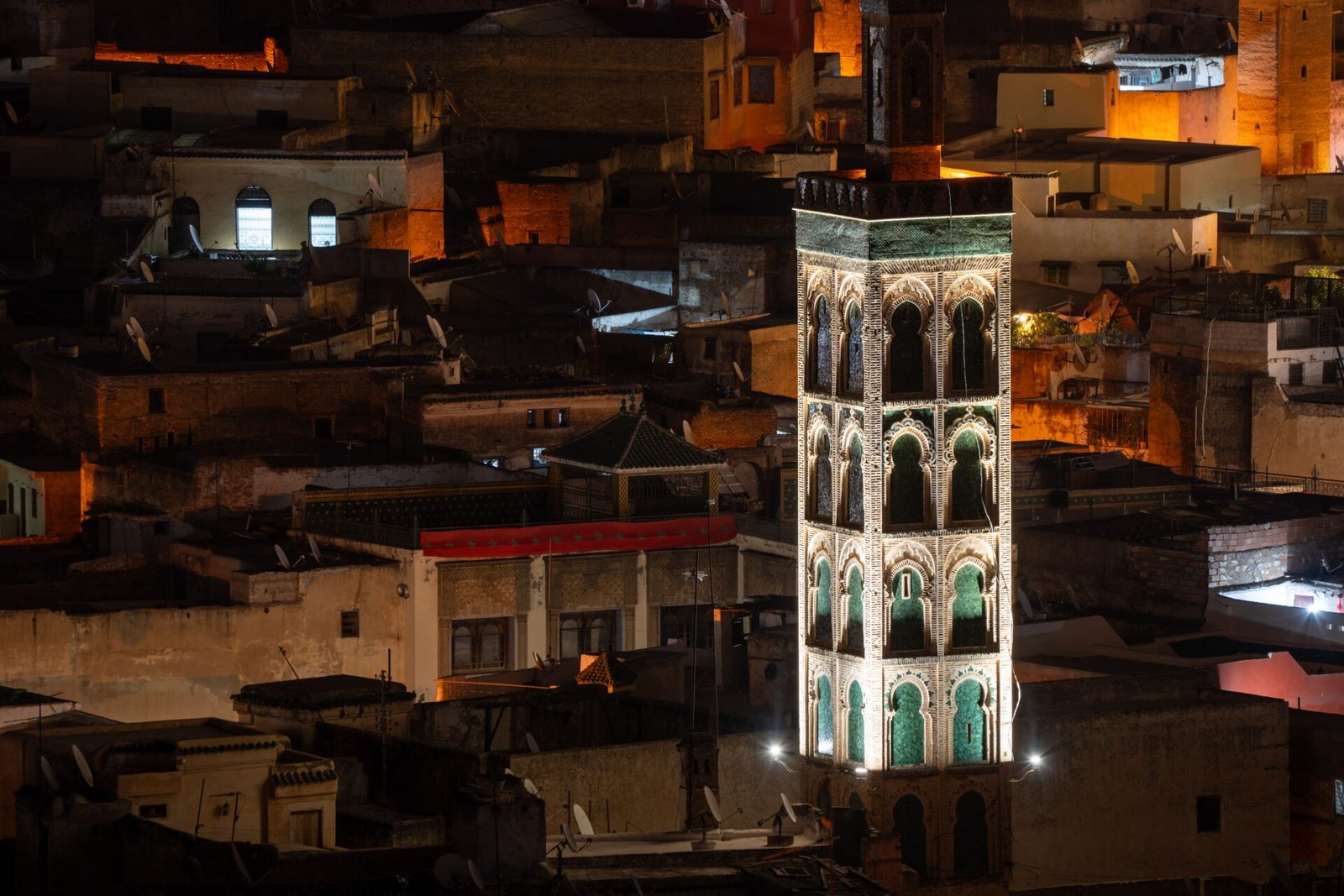Morocco’s imperial cities—Marrakech, Fes, Meknes, and Rabat—are more than historical capitals. They are living museums of art, tradition, and identity. From grand palaces to narrow alleyways filled with artisan workshops, these cities reveal the soul of Moroccan creativity. This article dives into how architecture and craftsmanship come together to define the essence of these iconic cities.
Marrakech – where colors, geometry, and tradition meet
🏰 The art of palatial design
Marrakech stuns visitors with its rich red hues and majestic architecture. The Bahia Palace is a masterpiece of 19th-century Moroccan design, combining painted cedarwood ceilings, carved stucco, and marble courtyards that reflect the elegance of Islamic and Andalusian art.
🧵 Artisans in the heart of the medina
The souks of Marrakech are a hive of creativity. Woodworkers, leather tanners, metal engravers, and textile weavers keep age-old traditions alive. Wandering through these markets is like stepping into a living archive of Moroccan craftsmanship.
Fes – the spiritual capital of craftsmanship
🏛 A labyrinth of sacred architecture
The medina of Fes, a UNESCO World Heritage Site, is a marvel of urban Islamic architecture. It houses the Al Quaraouiyine Mosque, intricate madrasas like Bou Inania and Al-Attarine, and homes with delicate latticework and hand-painted tiles.
🧶 The soul of Moroccan artisanship
Fes is renowned for its tanneries, pottery workshops, and zellij tile factories. Crafts here are more than economic activities—they’re spiritual expressions handed down through generations. The blue ceramics of Fes are especially iconic.
Meknes – royal ambition carved in stone
🏯 Monumental symmetry and power
Sultan Moulay Ismaïl transformed Meknes into a symbol of grandeur. The city’s massive gates like Bab Mansour and royal stables reflect architectural ambition and military precision. Walls, arches, and domes are designed to impress and endure.
🎨 Hidden workshops and heritage
While quieter than other cities, Meknes still preserves craftsmanship in its medina—ironwork, textile weaving, and embroidery are practiced by families who’ve been artisans for centuries.
Rabat – tradition meets modern vision
🏰 Harmonious architecture
As the political capital, Rabat blends tradition with modernity. The Kasbah of the Udayas shows Andalusian-Moorish influence with its white-and-blue homes and peaceful Andalusian garden. Meanwhile, the Hassan Tower and Mausoleum of Mohammed V represent a national architectural identity rooted in history.
🧵 Evolving craftsmanship
Rabat’s artisan scene is more institutionalized, with cultural centers and cooperatives dedicated to preserving embroidery, woodwork, and traditional costumes. It’s a city where the past is nurtured to inspire the future.
What Moroccan architecture and craftsmanship reveal
📐 A blend of influences
The architecture of Morocco’s imperial cities reflects Berber roots, Arab-Islamic culture, Andalusian refinement, and French colonial touches. From intricate mosaics to courtyard layouts and garden design, each element serves both aesthetic and spiritual functions.
🛠 Craft as a way of life
Moroccan craftsmanship isn’t just decorative—it’s deeply cultural. Artisans often learn their trade from childhood, perfecting skills through repetition, patience, and spiritual connection. Whether it’s a handwoven carpet or a chiseled plaster frieze, each piece tells a story of identity.
Timeless beauty in every detail
Exploring Morocco’s imperial cities is not just about ticking monuments off a list. It’s about sensing the rhythm of artisans’ hands, the harmony in geometric patterns, and the soul behind every carved door or painted tile. Architecture and craftsmanship are woven into daily life here—visible in grand mosques, silent alleys, and vibrant souks alike.
For travelers seeking meaning, Morocco offers more than history—it offers living heritage, shaped by people who turn clay, wood, and stone into timeless beauty.

